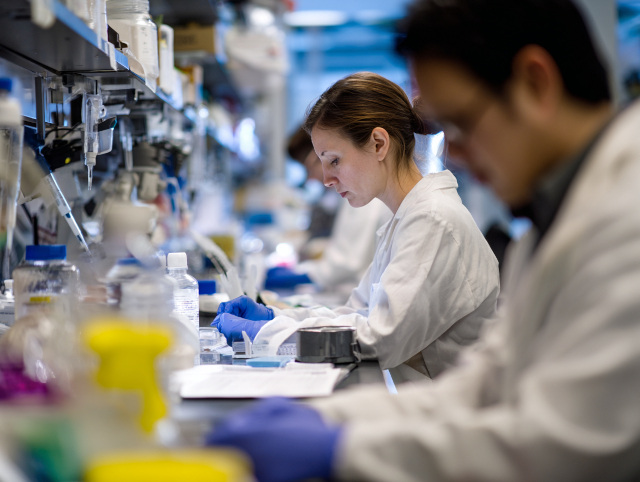A research team co-led by the Institute for Bioengineering of Catalonia (IBEC) and the West China Hospital of Sichuan University (WCHSU), in partnership with collaborators in the United Kingdom, has developed a groundbreaking nanotechnology approach that reverses Alzheimer’s disease in mice. Unlike conventional nanomedicine, which typically uses nanoparticles as passive carriers for drugs, this method employs “supramolecular drugs”—nanoparticles that are themselves biologically active. Instead of targeting neurons directly, the therapy focuses on repairing the blood–brain barrier (BBB), the protective interface that regulates what enters and leaves the brain. By restoring the BBB’s natural function, the team achieved a reversal of Alzheimer’s pathology in animal models, offering a transformative new direction for neurodegenerative disease treatment.
The brain is one of the body’s most energy-hungry organs, consuming about 20 per cent of an adult’s energy and up to 60 per cent in children. This energy is delivered through a vast and intricate network of around one billion capillaries, ensuring that each neuron is adequately nourished. The study underscores that vascular health is central to brain function: when the brain’s blood vessels deteriorate, cognitive decline often follows. This finding highlights that Alzheimer’s is not solely a neuronal disorder but also a disease of the brain’s vasculature. Repairing this vascular system, therefore, not only halts progression but can also help restore lost brain function.
The blood–brain barrier plays a vital defensive role, shielding the brain from toxins and pathogens. In Alzheimer’s disease, however, this barrier becomes compromised, trapping toxic “waste proteins” such as amyloid-β (Aβ) inside the brain. The researchers discovered that their supramolecular nanoparticles could reset this clearance system, allowing Aβ to pass safely into the bloodstream and be removed. In mice genetically engineered to overproduce Aβ and mimic Alzheimer’s symptoms, three doses of the nanoparticle treatment led to a 50 to 60 per cent reduction in Aβ levels within just one hour. According to Junyang Chen, co-author of the study and researcher at WCHSU, this rapid effect marked a breakthrough in addressing the disease’s root cause rather than merely managing symptoms.
The behavioural results were equally impressive. Treated mice displayed marked improvements in memory and cognitive function, even at advanced stages of the disease. In one key experiment, a 12-month-old mouse—the equivalent of a 60-year-old human—received the nanoparticle treatment and was observed for six months. By the end of the study, the now 18-month-old mouse (roughly equivalent to a 90-year-old human) had recovered behaviour comparable to a healthy animal. “The long-term effect comes from restoring the brain’s vasculature,” explained Professor Giuseppe Battaglia, ICREA Research Professor at IBEC and leader of the Molecular Bionics Group. “Once the vascular system begins to function again, it clears amyloid-beta and other harmful molecules, allowing the brain to regain its natural balance.”
The key to this recovery lies in restoring amyloid-β clearance through the receptor LRP1, which typically acts as a molecular gatekeeper. In Alzheimer’s, excessive Aβ overwhelms this receptor, halting the brain’s ability to remove waste proteins. The supramolecular nanoparticles act as molecular “switches,” mimicking the natural ligands of LRP1 to reactivate the clearance process. Designed with molecular precision, these nanoparticles are built from the bottom up, featuring carefully engineered size and surface ligands that allow them to interact specifically with cell receptors. This precision not only enables the removal of toxic proteins but also reinstates vascular health, reducing inflammation and improving overall brain homeostasis.
This study redefines how Alzheimer’s disease can be treated by addressing its vascular origins rather than focusing solely on damaged neurons. By repairing the blood–brain barrier and restoring the brain’s natural waste-clearing mechanisms, the supramolecular drugs demonstrated an ability to reverse cognitive decline in ways previously thought impossible. As Lorena Ruiz Pérez, researcher at IBEC’s Molecular Bionics Group and Serra Hunter Assistant Professor at the University of Barcelona, concluded, “Our study demonstrated remarkable efficacy in achieving rapid amyloid-β clearance, restoring healthy blood–brain barrier function, and leading to a striking reversal of Alzheimer’s pathology.” This innovative therapy represents a significant leap forward in the fight against dementia and opens new horizons for nanomedicine’s role in combating neurodegenerative disease.
More information: Junyang Chen et al, Rapid amyloid-β clearance and cognitive recovery through multivalent modulation of blood–brain barrier transport, Signal Transduction and Targeted Therapy. DOI: 10.1038/s41392-025-02426-1
Journal information: Signal Transduction and Targeted Therapy Provided by Institute for Bioengineering of Catalonia (IBEC)








